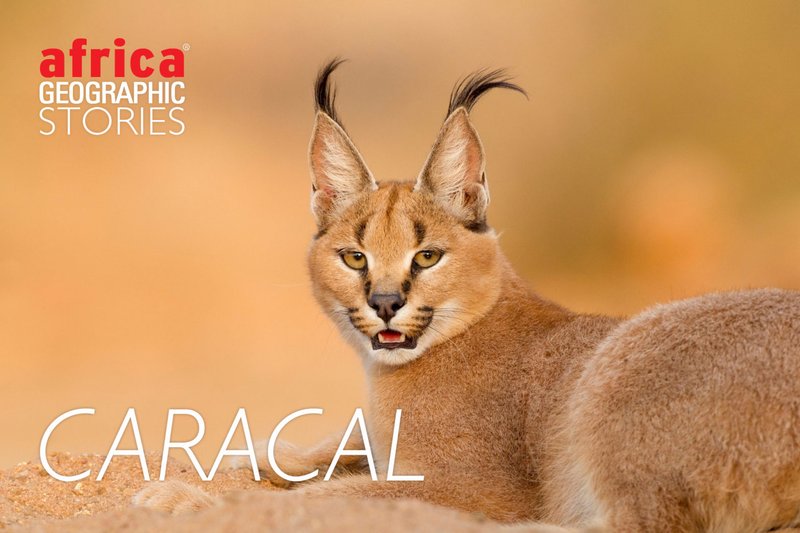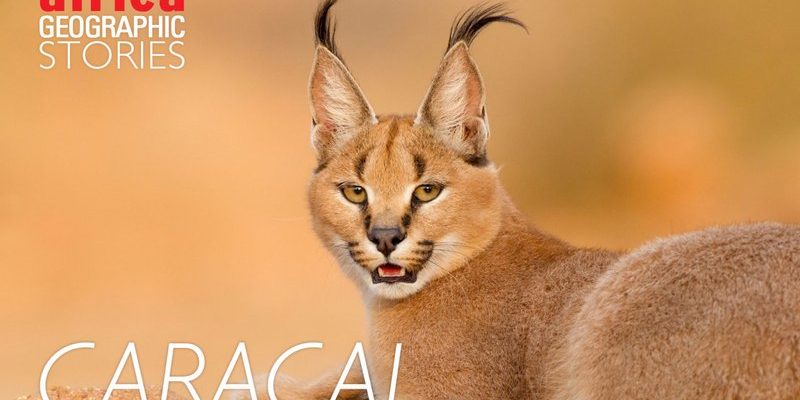
Consider the caracal as a natural regulator, much like how a thermostat keeps your home at a comfortable temperature. When the caracal controls the populations of its prey, it helps maintain the harmony among other species in the ecosystem. It’s fascinating to think about how this relatively small cat can have such a significant impact on its surroundings. So, let’s dive deeper into the caracal’s role and explore why it matters to the environment.
What is a Caracal?
To understand the caracal’s impact, we first need to know what it is. The caracal is a wild cat native to Africa, the Middle East, and parts of Central Asia. With its striking golden-brown fur, distinctive ear tufts, and strong legs, it stands out in the wild. The name “caracal” comes from the Turkish word “karakulak,” meaning “black ear,” highlighting those eye-catching tufts.
In size, caracals weigh between 20 to 40 pounds and can reach up to 19 inches in height. They’re known for their agility, which allows them to jump up to 10 feet in the air to catch birds mid-flight. That’s like an Olympic gymnast flipping through the air! Caracals are primarily nocturnal, which means they hunt and roam during the night, making them elusive to spot in the wild.
Knowing about their physical traits helps us appreciate their role better. Their unique adaptations make them efficient hunters, allowing them to thrive in their respective habitats.
The Caracal’s Prey: A Balancing Act
One of the most significant roles the caracal plays is as a predator. They primarily feed on rodents, birds, and small mammals, which helps regulate these populations. Imagine if there were no predators like the caracal; rodent populations could explode, leading to overgrazing and damaging plant life. This imbalance can ripple through the entire ecosystem.
Here’s the thing: caracals are opportunistic hunters. They often choose their prey based on availability. For example, in a grassland ecosystem, you might find them hunting meerkats or hares, while in a forest, they may target birds or small rodents. This adaptability means that caracals can thrive in various environments and help keep prey populations in check, preventing any single species from dominating.
Additionally, a healthy caracal population indicates a thriving ecosystem. If their numbers decline, it could be a sign that something is wrong with the environment—maybe there’s a loss of habitat or a decrease in prey. So, in many ways, they act as an indicator species, offering insights into the health of their ecosystems.
Caracals and Their Habitat
Speaking of environments, caracals are typically found in savannahs, semi-deserts, and mountain regions. They prefer areas with plenty of cover for hunting and resting. But as adaptable as they are, caracals need a variety of landscapes to thrive.
Let me explain further: when caracals roam their territories—sometimes as large as 20 square miles—they interact with other species in complex ways. They may compete with other predators for food, like jackals or smaller wild cats. This competition helps to maintain a balance, ensuring no single species becomes too dominant.
Human activities, like urbanization and agriculture, can disrupt these habitats. When caracals lose their natural space, it can lead to conflicts with humans, like livestock predation. Protecting their habitat is crucial, not just for the caracal but for the health of the entire ecosystem. When we preserve these spaces, we also support countless other species that share their environment.
The Importance of Genetic Diversity
Genetic diversity is vital for any species’ survival, and caracals are no exception. A healthy population of caracals means a robust gene pool, which can help them adapt to changes in the environment, like climate shifts or diseases. When genetic diversity is low, it can lead to inbreeding and weaken the population.
For instance, if caracals are isolated in one area due to habitat loss, they may struggle to find mates. This isolation can lead to a decrease in genetic variation, making the species more vulnerable to diseases and environmental changes. By maintaining corridors and ensuring connectivity between caracal populations, we can help support their genetic health.
It’s like having a family tree that branches out widely—more connections mean better chances for survival. This diversity helps ensure that caracals can continue to thrive and play their essential roles in their ecosystems.
Conservation Efforts for Caracals
With their crucial role in the ecosystem, conserving caracals is essential. Several organizations and researchers are actively working to protect these remarkable cats and their habitats. They focus on habitat preservation, reducing human-wildlife conflict, and conducting research on caracal populations.
One effective method is creating protected areas where caracals can roam freely without the threat of habitat destruction. Additionally, educating local communities about the importance of caracals can foster coexistence. For instance, farmers can implement strategies to protect livestock without harming caracal populations.
You might be wondering, why should we care? Preserving caracals isn’t just about saving a wild cat; it’s about maintaining the balance of our ecosystems. When we lose a predator like the caracal, we upset the entire food web. So, every effort to conserve them is an investment in our planet’s health.
The Symbolism of the Caracal
Beyond their ecological importance, caracals hold symbolic significance in many cultures. They often represent agility, independence, and adaptability. In some African traditions, the caracal is celebrated as a symbol of stealth and cunning, embodying the spirit of the wild.
This cultural appreciation can be a powerful tool for conservation. By recognizing and respecting the caracal’s place in nature and human culture, we can inspire future generations to take action for their protection. When people feel a connection to wildlife, they are more likely to support conservation efforts, whether through advocacy or sustainable practices.
Encouraging a shared respect for caracals can help us appreciate the broader story of biodiversity. After all, every species, big or small, plays a role in the intricate web of life on Earth.
The caracal is more than just a striking wild cat; it plays a vital role in maintaining the balance of its ecosystem. As a predator, it helps control prey populations, indicating the health of its environment. Understanding the caracal’s role allows us to recognize the interconnectedness of nature and the importance of preserving these majestic creatures.
By supporting conservation efforts and valuing the ecosystems they inhabit, we can ensure that caracals continue to thrive for generations to come. They remind us that every species has a role to play in the dance of life—one that, when disrupted, can have far-reaching consequences for us all. Let’s appreciate and protect the caracal, a true guardian of its ecosystem.

